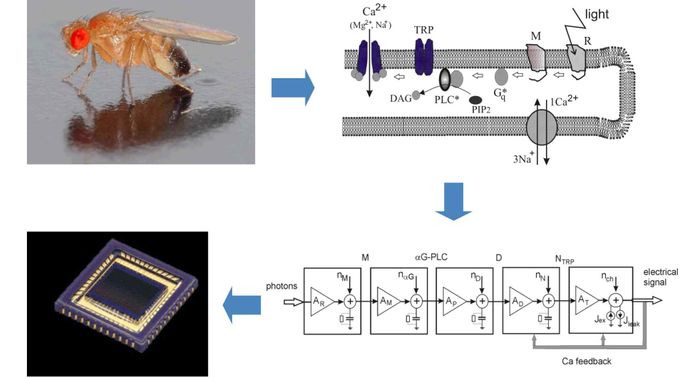Bio-inspired processing
Bio-inspired processing refers to devices and processes that are inspired by biology but may not follow quite as closely the principle of direct morphing. For example, they can be based on the operational principles of the sensing in living cells and organisms (such as phototransduction), metabolic processes (e.g. insulin secretion) or neural pathways (often referred to as Neuromorphic Engineering).
The first step in this methodology is a detailed analysis of the selected process, based on the available biological literature. The next step is the attempt to reduce the vast amount of information accumulated in the literature over time into a model which captures the essence of the process. For example, G-protein cascade is a typical biochemical process used for signal amplification in signal transduction pathways. The process can be mathematically modelled and simulated to reproduce the experimental results. Then comes the crucial step of identifying the vital processes which allow the functionality of the system, such as noise suppression or exceptional sensitivity which happen for example in photoreceptors which are capable of detecting a single photon. Eventually these processes can be translated into electronic designs and utilised in electronic devices.
Demonstration of the methodology is given in the figure bellow which represents the phototransduction process in the Drosophila microvillus. Five main stages in the reaction are: Stimulus (Rhodopsin cycle), Amplification (G protein, PLC and DAG dynamics), Ion channel kinetics (TRP activation/inactivation), Ion fluxes, and the Calcium feedback.

Drosophila’s eye -> G-protein cascade in a photoreceptor cell -> A cascade of analogue amplifiers -> A new ultra-sensitive imaging chip